Missouri Headwaters State Park
- January 22, 2024
- 0 comment
Discover the Charm of Missouri Headwaters State Park, located in Montana’s breathtaking landscape, Missouri Headwaters State Park is a fusion of natural beauty and historical richness. Here, the confluence of the Jefferson, Madison, and Gallatin rivers marks the birth of the mighty Missouri River, a site steeped in history with ties to the legendary Lewis and Clark Expedition.
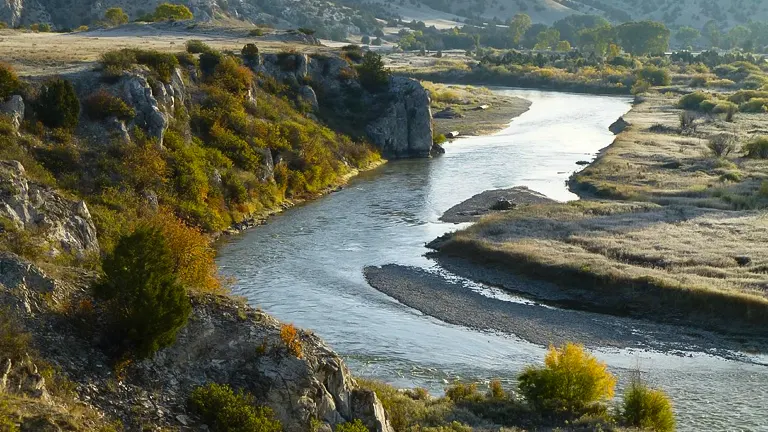
As you explore its trails, you’re treated to a canvas of rolling hills, diverse wildlife, and peaceful river scenes. Ideal for both history enthusiasts and nature lovers, this park offers a serene escape into a world where history’s echoes and nature’s tranquility coexist beautifully.
Characterizing Features of Missouri Headwaters State Park
- Confluence of Rivers: A standout feature of Missouri Headwaters State Park is the meeting point of the Jefferson, Madison, and Gallatin Rivers. This convergence is significant as it marks the formation of the Missouri River, one of North America’s major waterways. The confluence creates a unique ecological environment, offering rich habitats for diverse aquatic species and a picturesque setting for visitors. It’s a place where the dynamic forces of nature are visibly at play, making it a fascinating spot for both naturalists and casual observers.
- Historical Landmark: The park holds substantial historical importance, particularly as a key site of the Lewis and Clark Expedition. In 1805, this exploration team camped at the confluence, marking a significant event in American history. The area is also historically relevant to various Native American tribes, trappers, and early settlers, making it a hub of cultural and historical learning. Visitors are offered a glimpse into the past, understanding the challenges and triumphs of those who traversed and lived in these landscapes centuries ago.
- Diverse Terrain: Encompassing over 532 acres, the park showcases a variety of landscapes, including riverbanks, floodplains, grassy fields, and rocky hills. This diversity not only offers scenic beauty but also supports different ecosystems, each hosting unique plant and animal life. The terrain provides a natural playground for outdoor activities and an ideal setting for ecological studies, offering something for every visitor, from avid hikers to amateur geologists.
- Flora and Fauna: Missouri Headwaters State Park is home to a wide range of plant and animal species. The riparian zones along the rivers support lush vegetation, including cottonwood and willow trees, while the upland areas feature grasslands and sagebrush communities. Wildlife sightings include deer, beavers, and various bird species, including the iconic bald eagle. This biodiversity adds to the park’s appeal as a destination for wildlife enthusiasts and photographers.
- Recreational Opportunities: The park is a haven for recreational activities. It offers a network of hiking trails that cater to all skill levels, fishing spots along the rivers, and camping facilities for an immersive outdoor experience. These activities allow visitors to connect with nature, whether through a peaceful fishing session, a challenging hike, or a night under the stars.
- Educational and Interpretive Programs: Missouri Headwaters State Park is not just a place for recreation but also for learning. The park offers educational and interpretive programs that provide insights into its natural and historical significance. These programs include guided walks, talks, and displays, making the park an excellent destination for families and educational groups looking to combine fun with learning.
Each feature of Missouri Headwaters State Park contributes to its status as a unique and cherished destination, blending natural beauty, historical depth, and recreational enjoyment in one scenic location.
History
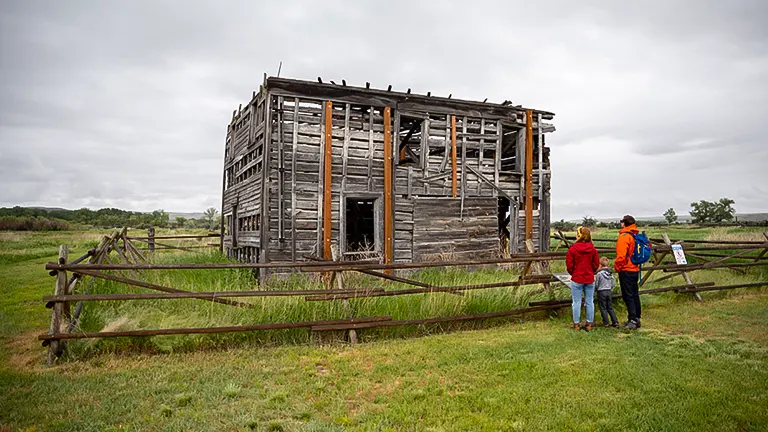
Missouri Headwaters State Park, occupying 532 acres in Montana, is a site where the Jefferson, Madison, and Gallatin Rivers converge to form the Missouri River, a critical juncture in the American landscape both historically and geographically. This area was once a pivotal gathering and hunting ground for Native American tribes and later gained prominence during the Lewis and Clark Expedition in 1805, marking it as a key landmark in the westward expansion of the United States. The park’s strategic significance continued through the 19th century as a favored spot for fur trappers and pioneers. Recognizing its rich historical narrative intertwined with diverse natural ecosystems, efforts in the 1960s led to the establishment of the park, preserving this unique confluence and its surrounding landscapes. Today, Missouri Headwaters State Park stands as a testament to the nation’s exploratory history and a sanctuary for the natural beauty and ecological diversity at the headwaters of one of North America’s most significant rivers.
Importance in Conservation and Recreation in Missouri Headwaters State Park
Missouri Headwaters State Park plays a critical role in both conservation and recreation, serving as a vital guardian of Montana’s natural heritage and a recreational haven. As the birthplace of the Missouri River, formed by the confluence of the Jefferson, Madison, and Gallatin Rivers, the park is a keystone in preserving the ecological integrity of these significant waterways. Its diverse habitats, from riparian zones to grasslands, are home to a variety of wildlife and plant species, making it a crucial area for biodiversity conservation. In terms of recreation, the park offers a multitude of activities that foster a deep connection with nature.
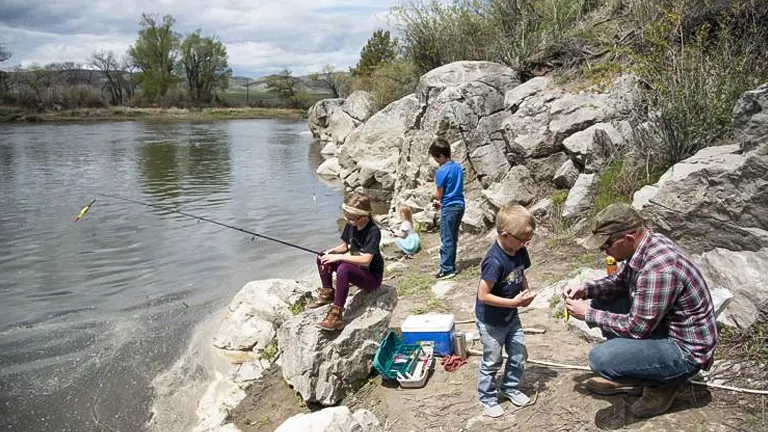
Visitors can engage in hiking, fishing, wildlife viewing, and camping, experiences that not only offer relaxation and adventure but also promote environmental awareness and stewardship. The park’s interpretive programs further enhance this, providing educational insights into the area’s natural and historical aspects. By balancing conservation efforts with recreational opportunities, Missouri Headwaters State Park not only protects a vital ecological and historical site but also provides a space where the public can appreciate and interact with the natural world, understanding the importance of preserving such treasures for future generations.
Unique Location of Missouri Headwaters State Park
The unique location of Missouri Headwaters State Park is a geographical marvel situated in the heart of Montana. It occupies a distinctive position where the Jefferson, Madison, and Gallatin Rivers converge to form the Missouri River, making it the genesis of one of North America’s longest rivers. This convergence creates a diverse and dynamic ecosystem, set against a backdrop of striking Montana landscapes. Situated at an elevation of 4,045 feet and covering 532 acres, the park offers panoramic views that encompass riparian habitats, sprawling meadows, and distant mountain ranges.
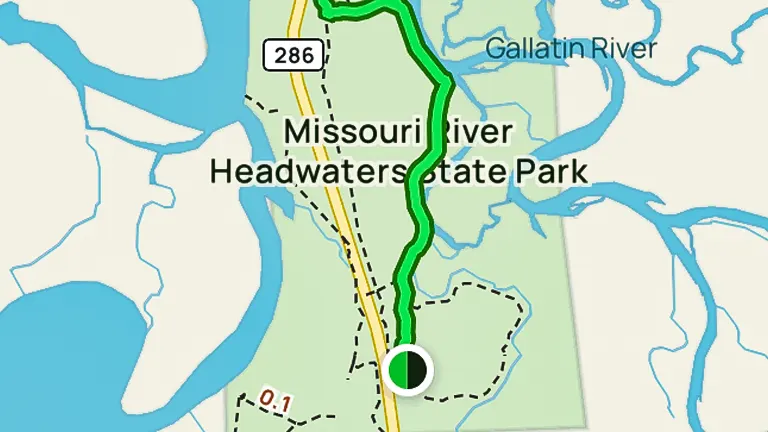
The area’s topography and hydrology make it a significant natural hub, influencing weather patterns and serving as a critical watershed area. This unique geographical setting has not only shaped the park’s diverse ecosystems but has also been a focal point in American history, serving as a landmark for exploration and settlement. Today, Missouri Headwaters State Park stands as a testament to the natural forces that have sculpted the landscape, offering visitors a rare glimpse into the confluence of natural beauty, ecological diversity, and historical significance.
Diverse Vegetation and Plant Species in Missouri Headwaters State Park
- Cottonwood Trees (Populus spp.): The riverbanks within Missouri Headwaters State Park are lined with towering cottonwood trees. These trees are essential to the park’s ecosystem, providing habitat for various bird species and stabilizing riverbanks with their extensive root systems. Their presence is especially vital in maintaining the ecological balance of the riparian zones.
- Willows (Salix): Commonly found alongside the park’s waterways, willows play a crucial role in preventing soil erosion and offering habitat for wildlife. Their flexibility and tolerance to water make them an integral part of the park’s riparian habitats.
- Sagebrush (Artemisia tridentata): This hardy shrub dominates the upland areas of the park, characterizing the high desert landscape. Sagebrush is a vital food source for local wildlife and supports a variety of organisms unique to this arid ecosystem.
- Wild Ryegrass (Leymus cinereus): This native grass species thrives in the park’s open meadows. It provides food for grazing animals and helps prevent soil erosion, playing a significant role in the park’s grassland ecology.
- Indian Paintbrush (Castilleja): Known for its vibrant red flowers, the Indian Paintbrush adds splashes of color to the park’s landscape. This flowering plant is not only visually appealing but also an important part of the park’s biodiversity, attracting pollinators like bees and butterflies.
- Ponderosa Pine (Pinus ponderosa): Scattered throughout the park, these towering pines are iconic in the Western United States. They provide critical habitat for wildlife and contribute to the park’s overall forest health by playing a role in fire ecology.
- Lodgepole Pine (Pinus contorta): Found in higher and cooler areas of the park, these pines are adapted to survive in harsh conditions. They are an important species for local wildlife and play a key role in the forest ecosystem, particularly in post-fire regeneration.
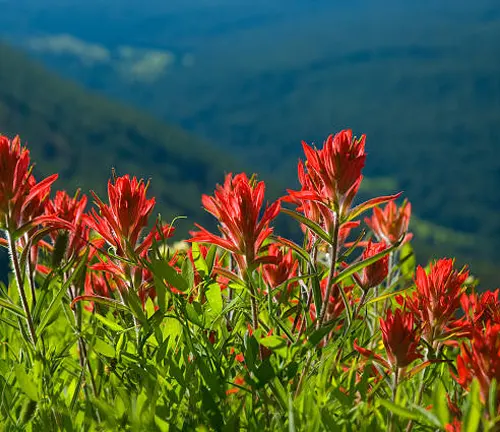
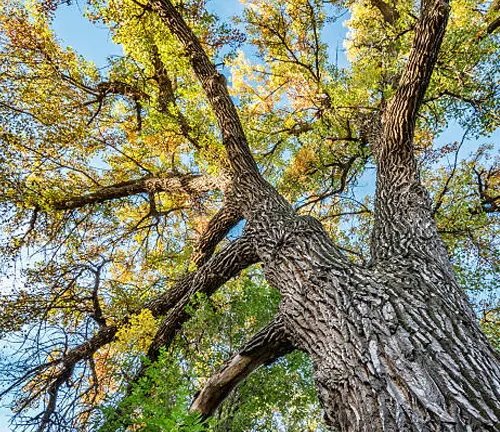
Each species contributes uniquely to the park’s ecological diversity, offering a variety of habitats and resources for wildlife, and creating a mosaic of plant life that enhances the park’s natural beauty and ecological value.
Fauna in Missouri Headwaters State Park
- White-Tailed Deer (Odocoileus virginianus): Commonly seen grazing in the park, white-tailed deer are a symbol of the area’s robust wildlife. Their presence indicates a healthy ecosystem, as they play a crucial role in maintaining the balance of flora and fauna in their habitat.
- Mule Deer (Odocoileus hemionus): Alongside their white-tailed cousins, mule deer are another common species in the park. Recognizable by their larger ears and different antler structure, they adapt well to the park’s varied terrain, from river valleys to mountainous areas.
- Beaver (Castor canadensis): As natural engineers, beavers play a vital role in shaping the park’s aquatic environments. Their dam-building activities create wetlands, which serve as crucial habitats for numerous other species and help maintain water levels.
- Bald Eagle (Haliaeetus leucocephalus): These majestic birds can often be seen soaring over the park’s rivers. As top predators, their presence is a strong indicator of the ecological health of the area, particularly the quality of the water bodies and availability of fish.
- Red-Tailed Hawk (Buteo jamaicensis): This bird of prey is frequently spotted in the park, identifiable by its distinctive reddish tail. They play a critical role in the ecosystem as predators, helping control the populations of small mammals and rodents.
- Osprey (Pandion haliaetus): Often seen near the park’s water bodies, ospreys are skilled fishers. Their nesting and hunting behaviors provide visitors with exciting wildlife viewing opportunities and indicate a healthy fish population in the rivers.
- Various Species of Trout: The rivers within the park are home to several trout species, including Rainbow Trout (Oncorhynchus mykiss) and Brown Trout (Salmo trutta). These fish are not only key components of the aquatic food chain but also popular targets for anglers visiting the park.
- Mountain Cottontail (Sylvilagus nuttallii): These small rabbits are a common sight in the park, particularly around dusk and dawn. They are an important food source for predatory animals and help in seed dispersal for various plant species.

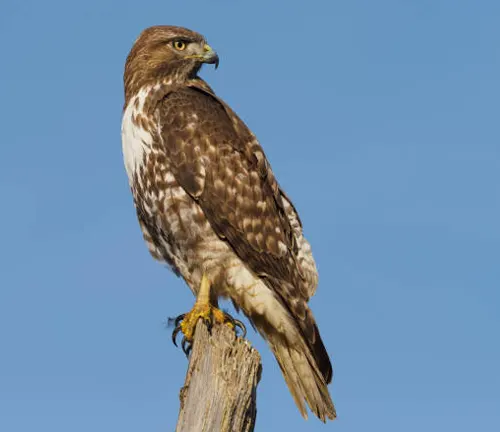
Each of these species plays a vital role in the ecological dynamics of Missouri Headwaters State Park, contributing to its biodiversity and offering visitors unique wildlife viewing experiences.
Attractions in Missouri Headwaters State Park
The Confluence of the Jefferson, Madison, and Gallatin Rivers: This natural spectacle, where three significant rivers merge to form the Missouri River, is the park’s centerpiece. The site offers breathtaking views and a unique opportunity to witness a pivotal geological feature that played a crucial role in shaping the region’s natural and human history.

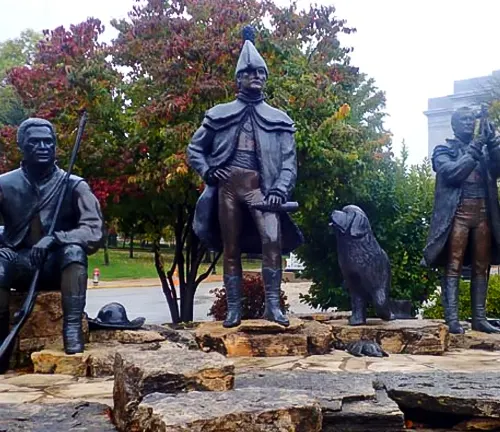
Lewis and Clark Expedition Historical Sites: Marked throughout the park are several historical sites significant to the Lewis and Clark Expedition. These spots, including campsite markers, provide a glimpse into the early 19th-century exploration and are a draw for those interested in American history and the era of westward expansion.
Interpretive Trails and Overlooks: The park features several interpretive trails and scenic overlooks that allow visitors to explore its natural beauty and learn about the area’s ecology and history. Trails like the Sacagawea Interpretive Trail offer informative signs detailing the park’s rich past and present.

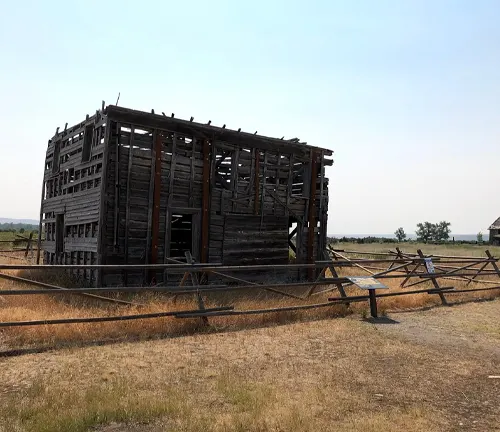
Missouri Headwaters National Historic Landmark: This designated landmark commemorates the site where the Lewis and Clark Expedition camped and acknowledges the area’s long-standing significance, from Native American use to its role in early American exploration and settlement.
Picnic Areas and Campsites: Strategically placed throughout the park, these areas offer visitors the chance to relax and enjoy the serene natural environment. They are perfect for family outings, offering both scenic beauty and a chance to experience the park at a leisurely pace.
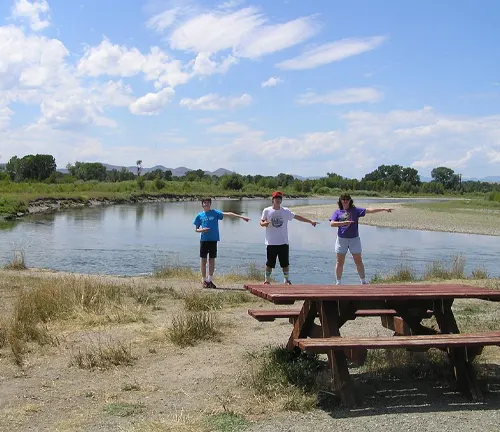

Historic Interpretive Displays: The park features several interpretive displays that provide educational insights into its historical significance, natural features, and the ecosystem. These displays are designed to enrich the visitor experience, making the park not just a place of natural beauty but also a learning destination.
The Headwaters Heritage Museum in Three Forks: Near the park, this museum offers additional historical context about the area, featuring exhibits on the Lewis and Clark Expedition, Native American history, and the natural history of the region.

Each of these attractions contributes to the rich tapestry of experiences available at Missouri Headwaters State Park, making it a destination that offers both natural wonders and a deep dive into significant historical events.
Recreational Activities in Missouri Headwaters State Park
- Hiking: The park offers a variety of trails suited for all levels of hikers, from leisurely walks along the riverbanks to more challenging hikes through diverse terrains. These trails not only provide a way to explore the natural beauty of the area but also offer opportunities for wildlife observation and photography, with scenic vistas along the way.
- Fishing: Anglers find the confluence of the Jefferson, Madison, and Gallatin Rivers an ideal spot for fishing. These rivers are home to several species of trout, providing both a challenging and rewarding experience for fishing enthusiasts. The diverse aquatic environments offer different types of fishing experiences, from fly fishing to traditional angling.
- Wildlife Viewing and Bird Watching: The park’s diverse ecosystems make it a prime location for wildlife viewing and bird watching. The area is home to a variety of mammals, birds, and other wildlife species, offering enthusiasts a chance to observe these creatures in their natural habitat. The presence of species like the bald eagle adds an exciting element for bird watchers.
- Photography: With its stunning landscapes, diverse wildlife, and historical significance, Missouri Headwaters State Park is a photographer’s paradise. Whether capturing the serene beauty of the rivers, the majesty of the wildlife, or the rich textures of the landscape, photographers find endless inspiration here.
- Picnicking: Scattered throughout the park are several picnic areas that provide the perfect setting for a family outing or a quiet lunch in nature. These areas are equipped with tables and often offer picturesque views of the surrounding landscape, making them a popular choice for a relaxing break during park visits.
- Camping: For those looking to extend their stay, the park offers camping facilities. The campsites allow visitors to immerse themselves in the natural environment, experiencing the park under the stars and waking up to the sounds of nature.
- Boating and Canoeing: The rivers within the park offer opportunities for boating and canoeing, allowing visitors to experience the park from a different perspective. Paddling along the rivers can be both a peaceful and exhilarating way to explore the area’s natural beauty.
- Educational Programs: The park occasionally hosts educational and interpretive programs, which are great for families and anyone interested in learning more about the park’s ecology, history, and wildlife. These programs are often led by knowledgeable staff or local experts, providing an enriching experience.
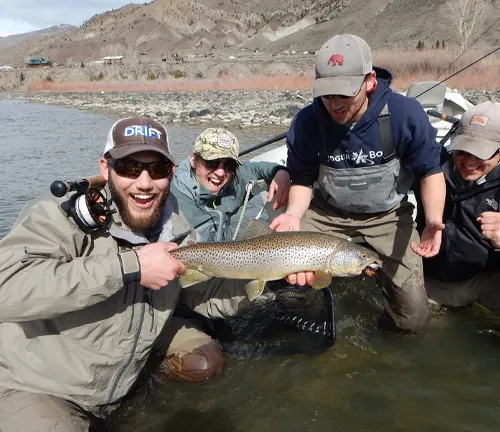
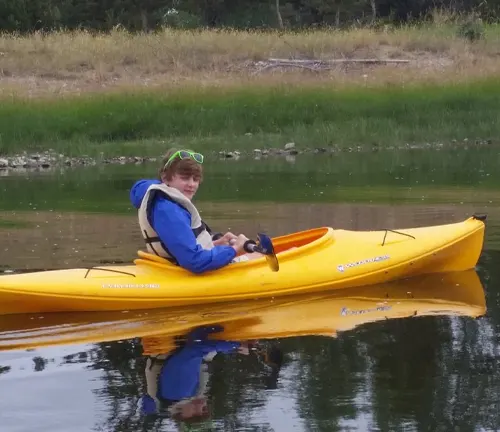
Each of these recreational activities enhances the experience of visiting Missouri Headwaters State Park, allowing visitors to connect with nature, engage in outdoor adventures, and learn about the park’s unique environment and history.
Different Facilities and Amenities in Missouri Headwaters State Park
- Visitor Center: The Visitor Center at the park serves as an informative hub, providing guests with insights into the park’s history, geology, and ecology. It’s a great starting point for first-time visitors to get oriented and gather information about the various attractions and activities within the park.
- Designated Picnic Shelters: In addition to open picnic areas, the park offers covered picnic shelters. These shelters are ideal for group gatherings or for visitors seeking a shaded spot to relax and enjoy the scenic views, regardless of weather conditions.
- Interpretive and Educational Signage: Throughout the park, there are numerous interpretive signs that offer educational content about the local flora, fauna, and historical sites. These signs enhance the visitor experience by providing context and background, making self-guided tours both informative and engaging.
- Playground Areas: For families with children, the park includes playground areas where kids can play and enjoy the outdoors. These areas are designed to be safe and fun, providing a break for children during a day of hiking or exploring.
- Wildlife Observation Platforms: Specific to wildlife viewing, the park has observation platforms that offer vantage points for observing animals in their natural habitat. These platforms are strategically located to maximize the chances of wildlife sightings while minimizing disturbance to the animals.
- Amphitheater: The park’s amphitheater is used for educational programs, talks, and sometimes for special events or performances. It provides a communal space where visitors can gather for organized activities and learning opportunities.
- Accessible Facilities: Ensuring inclusivity, the park has made efforts to provide facilities that are accessible to visitors with disabilities. This includes accessible trails, restrooms, and picnic areas, making the park’s natural beauty and recreational opportunities available to all.
- Parking and Road Infrastructure: The park is equipped with well-maintained parking areas and roads, ensuring easy access to various points within the park. The infrastructure is designed to handle peak visitor times while preserving the natural environment.
- Emergency Services and Safety Signage: For the safety of visitors, the park is equipped with emergency service contact points and clear safety signage. This includes information on wildlife encounters, park rules, and emergency procedures, ensuring a safe experience for all visitors.
- Gift Shop and Concession Stands: For souvenirs, snacks, or last-minute essentials, the park offers a gift shop and concession stands. These facilities provide convenience for visitors, offering a range of items from educational materials to refreshments.
Each of these facilities and amenities is tailored to enhance the visitor experience at Missouri Headwaters State Park, combining convenience, education, and safety, to ensure a memorable and enjoyable visit.
Tips and Advice for Visiting Missouri Headwaters State Park
- Check Weather Conditions: Before your visit, be sure to check the local weather forecast. The park experiences a range of weather conditions, and being prepared can significantly enhance your experience. Pack accordingly for sudden weather changes, especially if you’re planning to hike or camp.
- Plan Your Activities: With a variety of activities available, from hiking and fishing to historical exploration, it’s wise to plan your activities in advance. Consider the length and difficulty of trails if you’re hiking, and ensure you have the necessary equipment for fishing or other specific activities.
- Respect Wildlife: The park is home to diverse wildlife, including deer, beavers, and various bird species. Always observe wildlife from a distance, and do not attempt to feed or disturb them. Respecting their natural habitat is crucial for their safety and yours.
- Pack Essentials: Bring essentials such as water, snacks, sunscreen, insect repellent, and a first-aid kit. If you’re hiking, a map of the trails, a compass or GPS device, and appropriate footwear are important. For longer stays, especially camping, ensure you have all necessary gear.
- Leave No Trace: Adhere to the ‘Leave No Trace’ principles. Keep the park clean by disposing of waste properly, staying on designated trails to protect the natural vegetation, and not removing any natural objects or historical artifacts from the park.
- Stay Informed about Park Rules: Familiarize yourself with the park’s rules and regulations, especially if you’re camping or engaging in activities such as fishing or boating. This includes understanding campfire policies, fishing license requirements, and any specific area restrictions.
- Visit the Visitor Center: Start your visit at the park’s Visitor Center. It’s a great resource for current information, educational displays, and advice from park staff. The center can provide insights into the best spots for your planned activities and any recent wildlife sightings.
- Plan for Connectivity Issues: Cell phone coverage can be spotty in the park. Plan accordingly by informing someone of your itinerary and expected return time. For longer hikes or backcountry exploration, consider carrying a satellite communication device.
- Photography Etiquette: If you’re into photography, always be mindful of your surroundings and other visitors. Use zoom lenses for wildlife photography instead of getting too close, and avoid blocking trails or viewpoints for extended periods.
- Enjoy and Embrace the Experience: Lastly, be present and embrace the beauty and tranquility of the park. Whether it’s soaking in the historical significance, enjoying a quiet moment by the river, or observing the sunset, Missouri Headwaters State Park offers a truly enriching experience.
Following these tips will help ensure a safe, enjoyable, and respectful visit to Missouri Headwaters State Park, allowing you to fully appreciate all that this magnificent park has to offer.
Recommendation
If you’re seeking a destination that beautifully intertwines natural splendor with a rich historical tapestry, then Missouri Headwaters State Park is an absolute must-visit. Whether you’re an avid hiker, a fishing enthusiast, or a history buff, this park offers an array of experiences set against the breathtaking backdrop of Montana’s landscapes. Walk along the trails where the waters of the Jefferson, Madison, and Gallatin Rivers converge, forming the mighty Missouri River, and feel the pulse of early American exploration that resonates through the land. The park’s diverse wildlife and serene natural settings provide a perfect escape from the hustle of daily life, offering a peaceful yet invigorating experience. I highly encourage you to pack your bags, grab your camera, and set out for an unforgettable adventure at Missouri Headwaters State Park. You’ll leave with memories that last a lifetime and a newfound appreciation for the natural and historical wonders it preserves.
Conclusion
Missouri Headwaters State Park is a remarkable blend of natural beauty and historical richness. Offering everything from hiking and fishing to a glimpse into the Lewis and Clark Expedition, it’s a perfect destination for both nature lovers and history enthusiasts. With its stunning river confluence and diverse wildlife, this park is not just a scenic retreat but also a vibrant slice of American heritage, making it a must-visit spot in Montana.
FAQs
- What is the best time of year to visit Missouri Headwaters State Park?
The park is beautiful year-round, but the best time to visit is late spring through early fall. During these months, you’ll enjoy milder weather and the full bloom of the park’s natural beauty. Wildlife viewing and hiking conditions are also optimal during this period. - Can I bring my dog to the park?
Yes, dogs are welcome in the park but must be kept on a leash at all times. It’s important to clean up after your pet and ensure they do not disturb wildlife or other visitors. - Are there any camping facilities in the park?
Yes, the park offers camping facilities including sites for both tents and RVs. These campsites come with basic amenities like fire rings and picnic tables. It’s advisable to book in advance, especially during peak seasons. - Is fishing allowed in the park?
Absolutely, fishing is a popular activity in the park. The confluence of the rivers provides excellent fishing opportunities. Remember to follow Montana state fishing regulations and have the appropriate fishing license. - Are there guided tours available in the park?
The park occasionally offers guided tours and interpretive programs, especially during the summer. These tours are a great way to learn about the park’s history and ecology. Check the park’s official website or visitor center for the current schedule. - What types of wildlife might I see in the park?
The park is home to various wildlife including white-tailed and mule deer, beavers, a variety of bird species like bald eagles and ospreys, and occasional sightings of larger mammals like elk. Always view wildlife from a safe distance. - Are there any historical sites in the park?
Yes, the park is rich in history. There are several historical sites related to the Lewis and Clark Expedition, including campsite markers and interpretive signs detailing their journey. - What should I bring for a day visit to the park?
For a day visit, bring comfortable walking shoes, water, snacks, a camera or binoculars for wildlife viewing, and weather-appropriate clothing. If you plan to hike, a map of the trails is also recommended.
In conclusion, Missouri Headwaters State Park is a place where history breathes through the whispers of rivers and the rustle of leaves. It’s a sanctuary where the past and present merge, inviting visitors to explore, learn, and rejuvenate. Don’t miss the opportunity to experience this remarkable piece of Montana’s heritage and natural beauty.



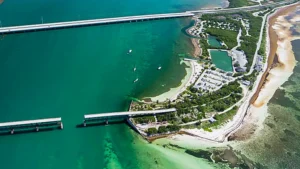





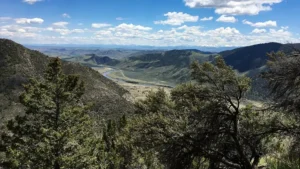
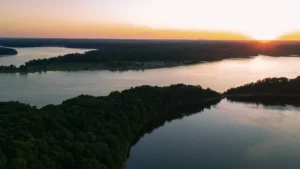

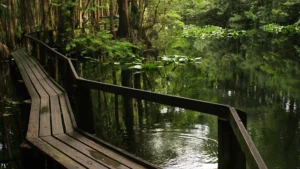
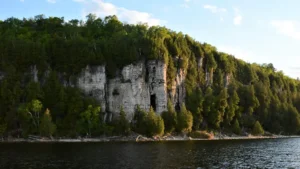
Leave your comment